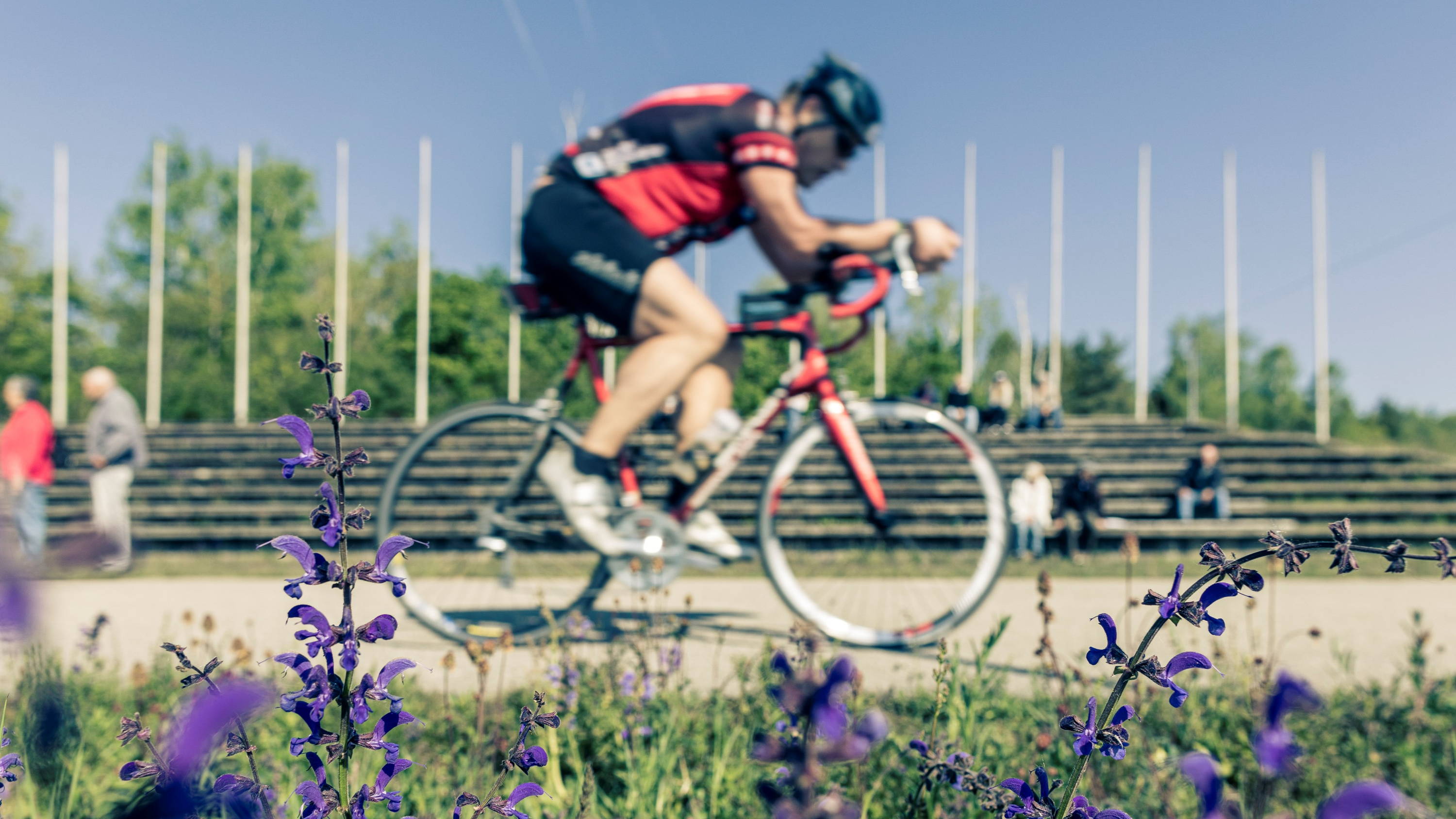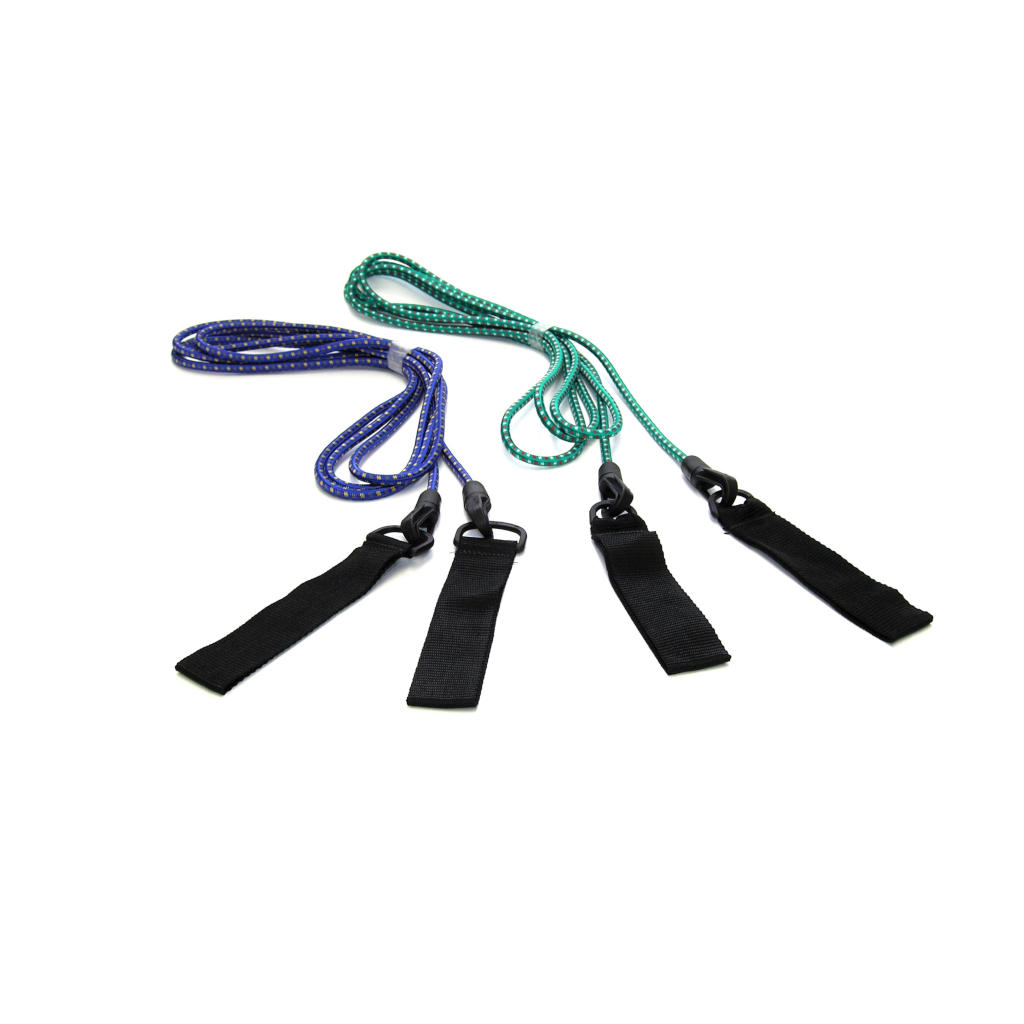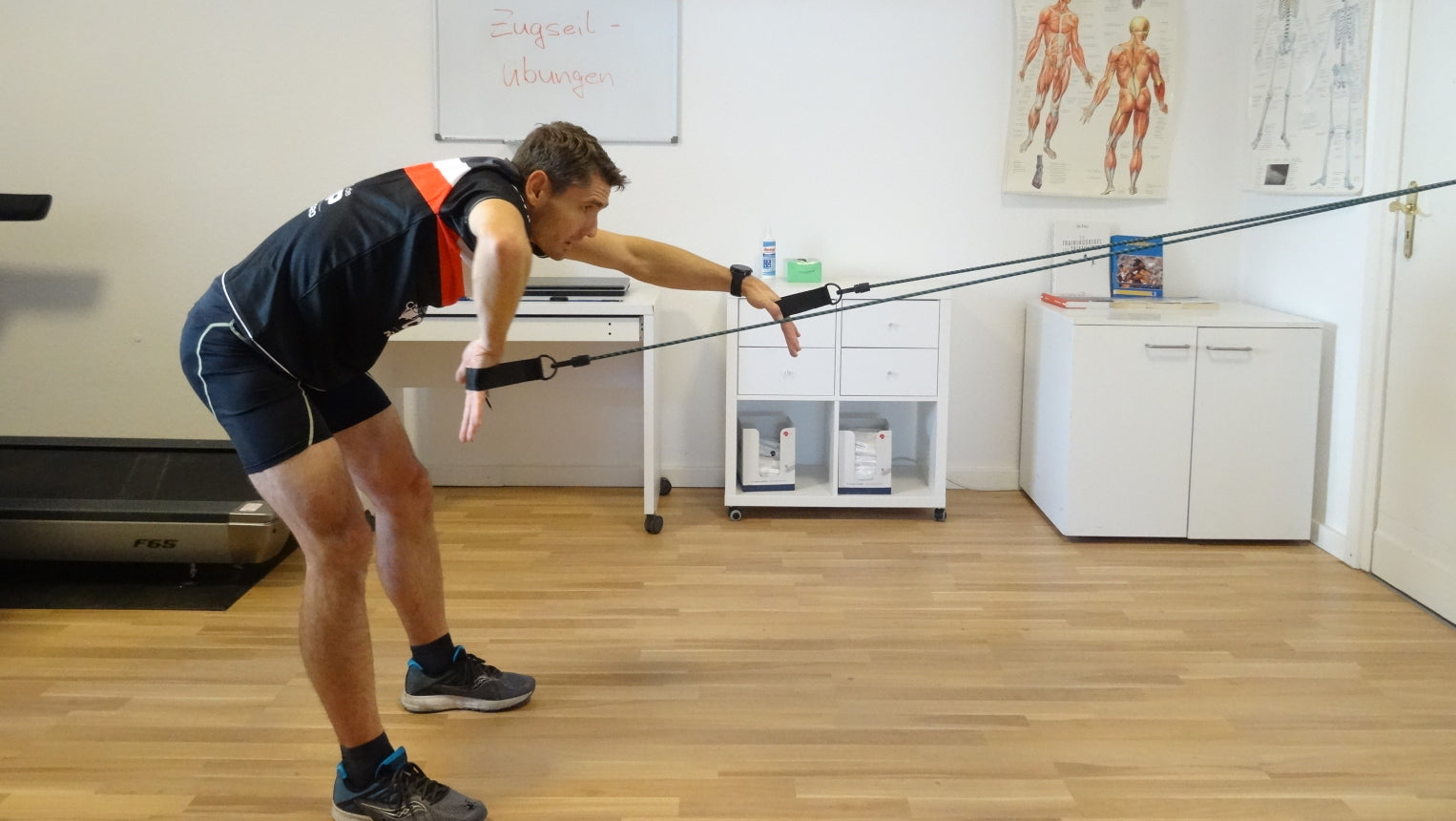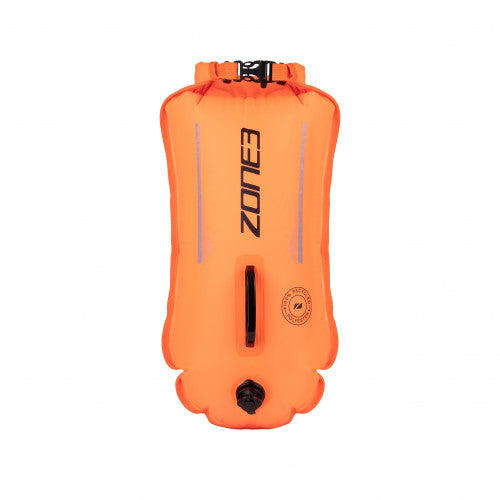Most of the time in a triathlon is spent on two hoops. Saving strength and avoiding pain is particularly important here, and there are gear that can help you with that.
In principle, participation in the triathlon is possible with almost any type of bike. Whether ultra-aerodynamic triathlon bike, classic racing bike, gravel or even trekking bike. A triathlon bike offers you a better seating position than a converted racing bike, for example, because it has a different geometry, a larger seat tube angle (76°-80° vs. 73°-74°) and a shorter head tube. This makes the aero seating position more comfortable. If you don't want to spend too much money but still want to get a taste of three sports, you can simply take the bike you already own, because starting with it is better than not starting at all.
Requirements: city bike or racing bike?
Start with the trekking/city bike
If you plan to do your first triathlon with your normal everyday bike, you can save yourself unnecessary modifications and save it for your first racing or triathlon bike. After your first competition, these will be at the top of your wish list. Unnecessary ballast such as a bicycle basket or a heavy wheel lock should still be removed. Also make sure your tires are well inflated and practice a few tube changes just to be safe so your performance isn't degraded by such external factors. A good bike helmet is also mandatory, otherwise you could have problems in the transition area and your safety is of course the top priority.
Rudy Project: bike helmet & glasses now in a bundle
The search for the right racer
If you want to start the competition in a more sporty way, a racing bike is the right choice. When buying, however, be sure to point out your triathlon intentions and make sure that you choose the slightly smaller frame size when choosing. A frame that is too big is one of the most common mistakes made by newcomers to triathlon. Keep in mind that a handlebar attachment could be mounted, which would further lengthen the bike. If you are between two frame sizes, it is better to orientate yourself downwards. Your proportions also play an important role. If, for example, your upper body or your legs are longer/shorter than the average, this should be considered when buying. In general, a seat test is an advantage to check the initial sitting position.
Bought a racing bike - now what?
Have you decided on a racing bike, but want to modify it for triathlon in order to further improve your time? Then read on, because now we come to the most typical triathlon accessory, the aero bars!
Triathlon bar attachment
This gives the driver the typical, aerodynamic seating position. So that this is possible comfortably, you should make sure that the upper arm and forearm form an angle of about 90° on the handlebar attachment. The closer you are to this value, the less holding work of the upper body is required. But there are other differences that should be noted.
1. Length of extensions/aerobars
The extensions/aerobars are the two tubes that are attached to the handlebars facing forward. You can adjust most handlebar attachments individually, as the aerobars are in a separate clamp that can be loosened and the length can be varied forwards/backwards. Your forearm length is decisive for the right setting. If you have to push the aerobars back very far, it may be that the ends protrude far back and may even affect pedaling (stepping out of the saddle). In this case, you can also saw off the ends that are too long. If you don't want to do it yourself, contact your trusted bicycle repair shop.
2. Curvature
There is no “right” choice when it comes to the degree of bending. Your options are straight or L-shaped extensions. With the latter, the wrist does not have to be stretched too much, but it is not for everyone either. So just go with your personal gut feeling.
3. Handlebar clamp
Make sure that the clamp of the handlebar attachment also fits your racing handlebar. The standard clamp for racing handlebars is 31.8 mm - that's what most handlebar attachments are made for. If you have an older model, the handlebars may still have an older standard size (diameter 26.0 mm). There are corresponding adapters for many handlebar attachments so that they can also be mounted on these handlebars.
Be careful with aero racing handlebars : some newer racing bikes are equipped with aerodynamically shaped racing handlebars or an integrated stem handlebar cockpit. However, most handlebar attachments can only be attached to round handlebar shapes. Here you should definitely get advice on whether a normal handlebar attachment can be attached here or what options there are for this.
4. The flatter the better
After installation, the armrest shells of the triathlon handlebar attachment usually lie relatively flat over the racing handlebar. This allows you to achieve a lower, aerodynamic seating position, which you should first get used to during training. If the position is too "aggressive" for you, there are various spacer solutions for most triathlon handlebar attachments that can be used to change the height of the armrests.
5. Spacing of extensions
You can use the following values as a guide: The extensions should be approx. 15 cm in the middle and approx. 20 cm from the middle of the armrests. This allows you to steer the bike well and have as little wind resistance as possible.
6. Tilting of extensions
When you mount your triathlon bar attachment, you should make sure that you attach it either horizontally or tilted slightly upwards. This gives you stability and good support in the armrest.
Oval 950 triathlon bar extensions
Get a head start with spacers, saddles, stems or seat posts
If you have decided to mount a triathlon handlebar attachment, further conversion measures will be more or less necessary. These changes allow you to ride even more efficiently with your handlebars.
change saddle
The lower seating position changes the contact surface and pressure on the saddle. If you find that you experience pain or numbness while riding, a different saddle that is better suited for that lower riding position may help. ( > Article: The right saddle in triathlon )
spacers
Depending on your handlebar assembly, you will find so-called spacers under, over or under and over your stem. You can use these small discs by changing their position to change the height of your handlebars quickly and cheaply. The prerequisite for this is that there are still spacers under or above your handlebars.
Stem changes height and length
When it comes to the stem, there are again a few options for further adapting your bike to you. You can either turn the existing stem up or down, which changes the height accordingly, or, as already mentioned, use the spacers. You can shorten the length of your bike by installing a shorter stem, or you can opt for an adjustable stem that is variable in both length and height.
stems
Adjust length with seat post
If you are still not satisfied with the length of your bike, you can change the seat tube angle with so-called cranked seat posts. These have a kink, which brings the saddle further forward. But if you just need a little extra room, a straight seat post is usually sufficient. However, you also have to pay attention to the clamp here, which you can determine with a thread, as with the handlebar attachment clamp. Use this to measure the circumference of your current seat post. If this is approx. 8.2 cm, this corresponds to the 26 and if it is approx. 10 cm you have a 31.8 clamp. If the latter is the case, you may need a cheap reducing sleeve that will reduce the diameter to 26mm.
Save time by drinking properly
Road bikes usually have space for two drinking bottles in the frame. While this works in training, it can be very different in competition. So that you don't waste a lot of time getting out and stowing away, there are also alternative drinking systems for the triathlon.
One of them is the bottle attachment behind the saddle. But the most suitable place for triathlon is between the extensions. These drinking systems are attached to the triathlon handlebar attachment and have a kind of straw. The advantage is that the bottle is directly in your field of vision and you are reminded to drink regularly. Thanks to the straw, this is very easy and you can sip it. In addition, there is no spilling over when refilling the bottle, as the bottle has a lamellar membrane that prevents this.
Bottle holders & hydration systems
Recommendation: bike fitting
A triathlon bar attachment changes the sitting position on the bike considerably. The correct setting of all components is a small science in itself. With bike fitting, experts will help you to find exactly the right setup for you and your bike, so that you can ride efficiently and at the same time comfortably and pain-free.
Additional Gadgets
If you still want to be prepared for all eventualities, there are a few things that can be useful in the competition. With the help of a saddlebag you can easily transport a spare tube, a pump and a tire lever. Alternatively, you can also sacrifice a bottle, saw it off and store your accessories there. To save time and energy, investing in an air pump with CO2 cartridges is recommended and a top tube bag is suitable if you want to transport additional gels.



















